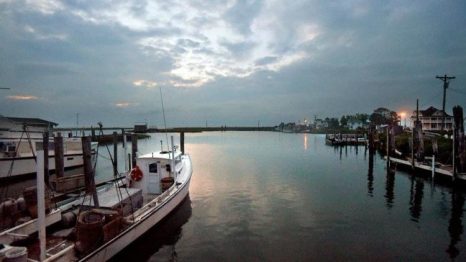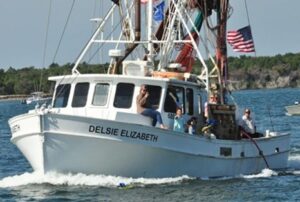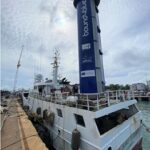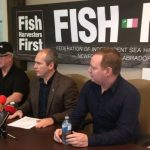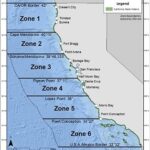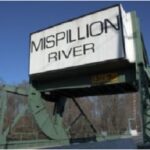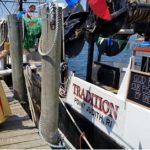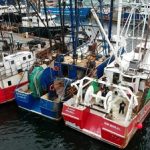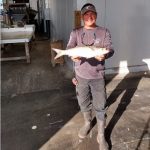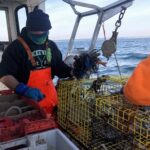Tag Archives: Chesapeake Bay
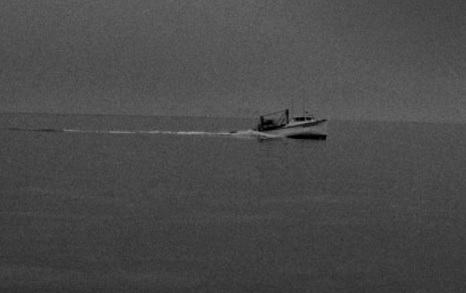
The Incredible True Story of the Henrietta C.
That Monday opened with winds coming steady out of the east-northeast at 20 to 25, or kyowking, as they say on Virginia’s Tangier Island. It’s one of many old and strange words used by the people there: kyowking, or blowing hard. A day unfit for pleasure craft and weekend sailors. But April 24, 2017, was also a workday, and for 72 of the island’s watermen, that meant venturing out into the Chesapeake Bay to harvest its famed blue crabs.,, So it was that at five o’clock that blustery morning, Edward Vaughn Charnock and his son, Jason, slacked the lines on Ed’s workboat, the Henrietta C., and chugged west from the harbor in the predawn dark. >click to read<

Lost Crab Pots: Not as Bad as We Thought?
Back in 2016, a team of scientists from the Virginia Institute of Marine Science said watermen lost an astounding number—145,000 crab pots, leading to the deaths of millions of dollars’ worth of crabs trapped in those pots. But a different panel of scientists says it’s not as bad as they originally thought. Glenn Davis, who chairs the Chesapeake Bay Stock Assessment Committee, told a winter meeting of fisheries managers that the VIMS numbers are wrong.,,, But once the VIMS study was out there, it was hard to take back. And sure enough, somebody tried to monetize it.>click to read<09:05
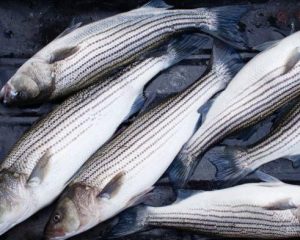
Proposal for tighter oversight of recreational striped bass catch dies
Commercial fishermen asked state regulators Tuesday night to make recreational fishermen tag their striped bass the way commercial operators do, to make sure they’re not taking too many fish. But the idea died when Doug Jenkins, president of the Twin Rivers Watermen’s group, in Warsaw, outlined his proposal to the Virginia Marine Resources Commission’s finfish management advisory committee. “We’re losing our rockfish (striped bass) quota and losing our crab industry,” Jenkins told the committee. >click to read< 18:32

Chesapeake Bay’s blue crabs made it through tough weather, survey finds
Despite the seemingly unending winter weather, Maryland found that the population of blue crabs in the Chesapeake Bay are “healthy and sustainable.” According to this year’s Blue Crab Winter Dredge Survey from the Maryland Department of Natural Resources, even though around 35 percent of adult female blue crabs didn’t make it through the cold, icy weather, there was a marked increase of young crabs returning to the bay this year. “The population is showing more resiliency to those ups and downs and those stresses,” said Chris Moore, senior regional ecosystem scientist with the Chesapeake Bay Foundation. >click to read<23:36
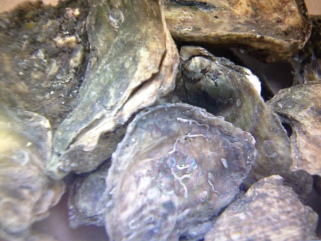
Billion Oyster Project – Environmentalists, Scientists Pledge 10 Billion Oysters By 2025, Watermen Skeptical
Drilling away, waterman Guy Spurry was working hard on Monday – not oystering – but building his boat. And in Annapolis the same morning, scientists and environmentalists say a new plan will have them working hard too. That plan – to bring 10 billion oysters to the Chesapeake Bay by the year 2025. Spurry says he’s skeptical. “It may work and it may not. It’s just a guessing game and it cost a lot of money to play these games,” Spurry said. It’s a money game that some argue needs to be played. >click to read< 18:31
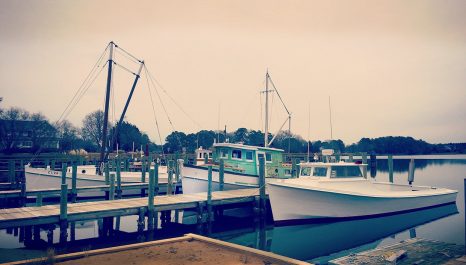
Woody Boating At 15 Degrees! What Could Go Wrong? And It Did!
While the globe was downloading the New App, and watching it crash over China and having Android issues, we decided to see if we could get the Boatres’s New Trawler started and get her to our dock, her new home. Hey, a boat ride helps everything… Right? Now, this was not for the faint of heart. It was cold as crap.. in a Virginia way. And it was around 3PM once we built up the courage to try. Photos, click here to read the story 21:53

Inviasve fish, Part 2 — the managing
Addressing invasive species issues requires dealing with two groups resistant to management — fish and people, so sound, scientific principles must be applied but psychology and human relations principles may be even more important. This column attempts to summarize hundreds of pages of articles and studies on blue catfish, flathead catfish and northern snakeheads. To repeat from Part 1, they are considered invasive to the greater Chesapeake Bay and its tributaries since they are “non-native species that cause harm to the economy, to the environment or human health” or “reproduce and expand beyond their initial areas of introduction.” click here to read the story 15:41

History — and crabbing — run deep in the Chesapeake Bay town of Hampton
It’s well before dawn and I’m driving through the darkness down a rutted dirt lane toward a small commercial boat marina on the outskirts of Hampton, Va. Pulling up, I can just make out the figure of Lee Smith in the light of a streetlamp. Smith is a fourth-generation Chesapeake Bay waterman who has agreed to take me out on his fishing boat while he harvests blue crabs.,,, “I’m a waterman, not a fisherman,” Smith told me, explaining that while he does trawl for fish, he does much more, including crabbing, clamming and oystering. Watermen have to be versatile to make a living, he says, and that means possessing the skills and equipment to catch whatever is both legally fishable and abundant enough to make money. click here to read the story 20:11
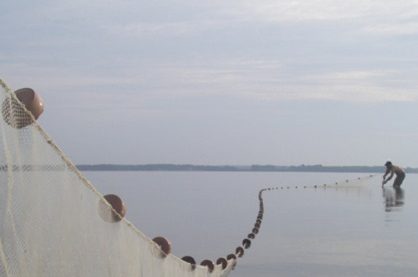
Juvenile striped bass maintain average abundance in Virginia waters in 2017
Preliminary results from an ongoing long-term survey conducted by researchers at the Virginia Institute of Marine Science suggest an average year class of young-of-year striped bass was produced in Virginia tributaries of Chesapeake Bay in 2017. The 2017 year class represents the group of fish hatched this spring that will grow to fishable sizes in 3 to 4 years. The program, formally known as the Juvenile Striped Bass Seine Survey, recorded a mean value of 8.98 fish per seine haul in the Virginia portion of Chesapeake Bay, which is similar to the historic average of 7.77 fish per seine haul. click here to read the story 08:16
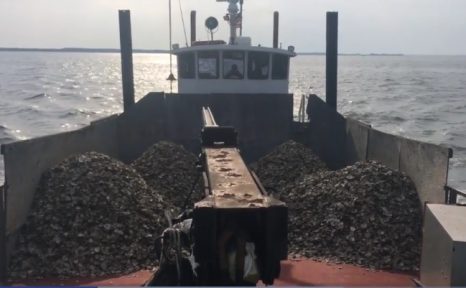
Maryland slashes oyster restoration acreage goal in Eastern Shore sanctuary
Maryland has decided to reduce the large-scale oyster restoration project goal in the Little Choptank River after boaters ran aground at another sanctuary and some of the man-made reefs there had to be rebuilt. The sanctuaries are among five planned to be built as part of a federal-state agreement to improve water quality in the Chesapeake Bay watershed.,, Skeptical of oyster restoration from the start, watermen have complained of trotlines getting stuck in new stone river bottoms and boats being damaged by oyster reef “high spots” in Harris Creek. A trotline is a long, heavy fishing line with short, baited lines suspended from it. They are often used to catch blue crabs in Maryland. click here to read the story 09:46
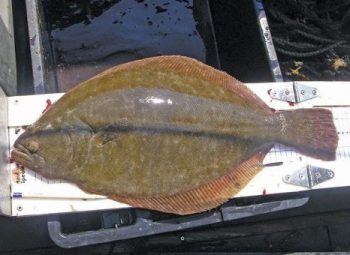
Trump official’s flounder ruling clouds Atlantic coast fish conservation
No one considers summer flounder an iconic Bay species. But fishery managers and conservationists say the ripple effect of a controversial Trump administration decision to let more “fluke” be caught in New Jersey may impact how important species such as striped bass and menhaden are managed in the Chesapeake. In the wake of an unprecedented decision by the U.S. Department of Commerce, some in Maryland are already calling on fishery managers to challenge how coastwide fishing restrictions are implemented in the Bay. The concern stems from a July ruling by Commerce Secretary Wilbur Ross that allowed New Jersey to reject harvest limits accepted by all other East Coast fishery managers, which were aimed at stemming a seven-year decline in the summer flounder population. In recent decades, states had appealed similar harvest cutbacks ordered by the Atlantic States Marine Fisheries Commission 22 times. Never before had the commerce secretary overturned a decision by the interstate panel. click here to read the story 08:47
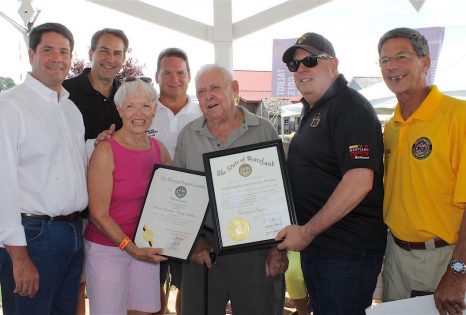
Talbot Watermen’s Association honors four local watermen
The Talbot Watermen’s Association and Gov. Larry Hogan honored four local watermen and remembered 15 during an opening ceremony for the eighth Watermen’s Appreciation Day on Sunday, Aug. 13, at the Chesapeake Bay Maritime Museum. The four local watermen who were honored with Governor’s Citations and citations from the Maryland General Assembly were Clifford “Big Daddy” Wilson, Capt. Stanley Larrimore, Capt. Woody Faulkner and Joe Spurry Sr. Talbot Watermen’s Association President Jeff Harrison said Faulkner began crabbing when he was 16 years old. While he did have to find work on land as a carpenter sometimes, due to “hard times” on the water, Harrison said Faulkner always came back to the water. “We want to honor him … for the spirit he had as a waterman,” Harrison said. click here to read the story 16:57
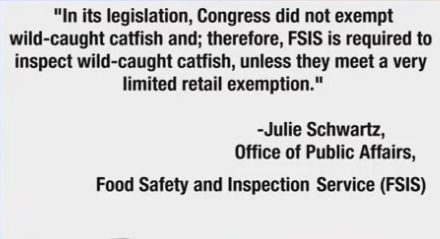
New Blue Catfish Regulation Threatening Health of Chesapeake Bay and Business
The blue catfish is putting up quite the fight and it’s making Delmarva crabbers like Ryan Crouch frustrated. A new federal regulation will make it harder for those who catch blue catfish to sell them. The more catfish caught – the better off the crab population and the livelihoods of the watermen who catch them. The regulation, which goes into effect in September, requires watermen to hire an inspector before the fish can be sold. Watermen like Crouch and business owners like Joe Spurry Jr. of Bay Hundred Seafood are fighting this new regulation. They say the more catfish out of the bay, the more crabs there are to catch. click here to read the story 10:02
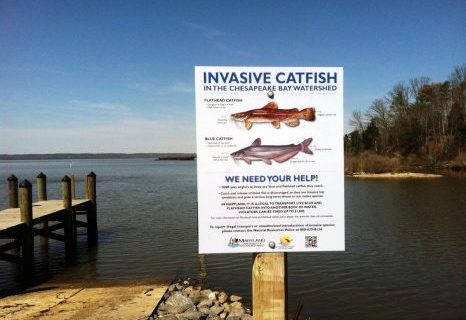
Maryland fishermen fight federal catfish regulations
Maryland Gov. Larry Hogan’s administration has joined the cause and also sent a letter to UDSA Secretary Perdue, asking for “immediate regulatory relief” from the mandated inspection program for the wild-caught, U.S. catfish industry. “With the U.S. seafood trade deficit reaching historic proportions, strict harvest limits on most other wild seafood species, and traditional U.S. seafood jobs on the decline, the (Trump) Administration must provide every possible advantage to Americans seeking to invest in the business of wild-caught, domestic catfish,” Hogan wrote in the letter dated Tuesday, Aug. 8. Hogan wrote that American consumers increasingly are demanding wild, domestic seafood, and catfish is among that. The “seafood market for catfish in the Maryland/Virginia/D.C. region has grown from zero to millions of pounds sold in just a few years,” the letter reads. click here to read the story 08:30
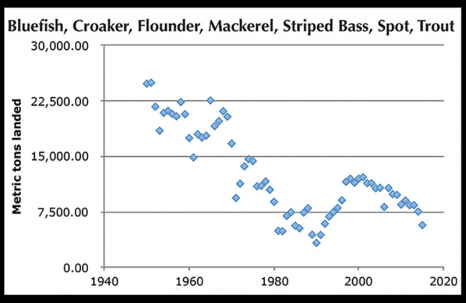
Chesapeake Bay fishery to keep deteriorating unless nutrients from land are addressed
The March Bay Journal 2017 commentary, Don’t let menhaden become a case of could have, should have, would have, laments the decline in Bay menhaden populations and blames the reduced number of predatory “sport” fish on Omega Protein’s harvest (click here). The Atlantic States Marine fisheries Commission is quite clear this year that “Atlantic menhaden are neither overfished nor experiencing overfishing” (click here). In Maryland, juvenile menhaden are sampled annually through the Estuarine Juvenile Finfish Survey. The index of juvenile menhaden has been low since 1992, and “environmental conditions seem to be a major factor driving recruitment.” (click here). Something other than overfishing must contribute to, or even be responsible for, reduced Bay menhaden populations. I contend that the primary cause of depleted finfish stocks, including bottom-feeding fish like croaker that do not eat menhaden, and the menhaden themselves, is poor water quality, not overfishing. click here to read the story 12:17
Blue Crabs Crest Tipping Point – Maryland and Virginia may limit harvest for the remainder of the season
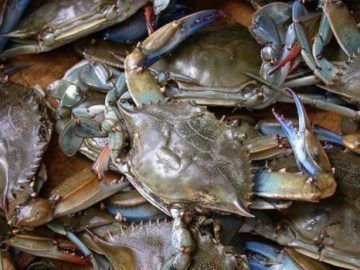 After almost three decades of effort, Maryland’s treasured Chesapeake Bay crustacean, the blue crab, has achieved a major scientific benchmark. The number of spawning females has at last reached the minimum target level for optimum species viability: 215 million sooks. The 2017 Winter Dredge Survey put the female population at well over the minimum, 254 million, an impressive 31 percent increase from the prior year. This is an important moment, as just four years ago (and five years prior to that), the female crab population had been driven to dangerous, even population-collapse, levels.,, To protect overall numbers, the Maryland, Virginia and Potomac River Fisheries Commission has proposed shortening the crabbing season and imposing stricter bushel limits on female crabs. No changes to male crab limits were proposed. click here to read the story 16:25
After almost three decades of effort, Maryland’s treasured Chesapeake Bay crustacean, the blue crab, has achieved a major scientific benchmark. The number of spawning females has at last reached the minimum target level for optimum species viability: 215 million sooks. The 2017 Winter Dredge Survey put the female population at well over the minimum, 254 million, an impressive 31 percent increase from the prior year. This is an important moment, as just four years ago (and five years prior to that), the female crab population had been driven to dangerous, even population-collapse, levels.,, To protect overall numbers, the Maryland, Virginia and Potomac River Fisheries Commission has proposed shortening the crabbing season and imposing stricter bushel limits on female crabs. No changes to male crab limits were proposed. click here to read the story 16:25

A crabbing boat sinks, a father is lost, a son rescued
In the final minutes of Ed Charnock’s life, he and his son clung to each other to conserve body heat in the frigid Chesapeake Bay. Jason Charnock handed his dad the only lifejacket he could grab from their fast-submerging crabbing boat. But the choppy water swept it away. “The boat sank, and Dad kept on floating away staring at me,” Jason Charnock told the Coast Guard in a statement he provided to The Associated Press. “I was looking for a helicopter to come,” he said. “I kept looking, and then looked back to see where my dad was, he wasn’t there and must have went under.” For this dwindling island community in the Chesapeake Bay, Ed Charnock’s drowning in late April struck a rare blow. click here to read the story 08:52
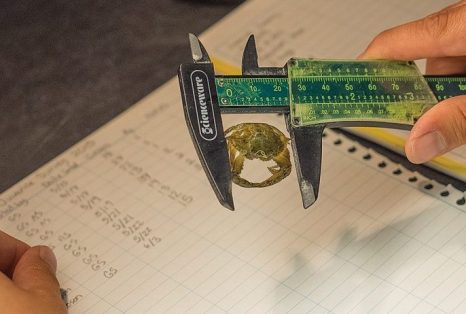
Fishery managers weighing cuts in Bay crab harvest
Chesapeake Bay crabbers will likely face some harvest restriction this season to protect future generations of the iconic crustacean, a move managers say is necessary because of the low population of juveniles. Fishery managers for Maryland, Virginia and the Potomac River Fisheries Commission all say they are considering shortening the season and imposing stricter limits on the harvest of female crabs. They are not proposing changes in male crab catches. News of harvest cuts surprised some crabbers at Maryland’s Blue Crab Industry Advisory Committee last week. The latest winter dredge survey results released in April showed the highest number of female crabs in the 28-year history of the annual count. Female crabs clocked in at 254 million, a 31 percent increase over last year. But the Baywide survey, which counts the crabs in more than 1,000 locations as they burrow in the mud, estimated there were 125 million juvenile crabs in the Chesapeake, a 54 percent decrease from the 271 million found in 2016. That is the lowest tally since 2013 — a year when crabbers also had their catch curtailed — and one of the five lowest estimates since 1990, managers said. Click here to continue reading the article 21:38
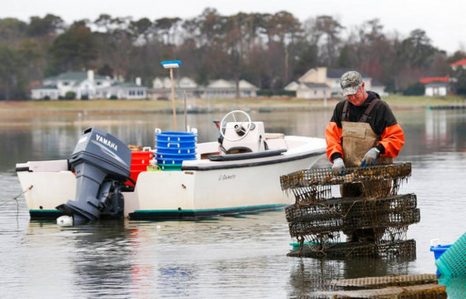
A new oyster war – Rich homeowners vs. working-class watermen
Oystermen, pirates and police clashed violently more than a century ago over who could collect the Chesapeake Bay’s tasty and lucrative oysters. As the shellfish makes a comeback, a modern-day oyster war is brewing, this time between wealthy waterfront property owners and working-class fishermen. Over the past five years, oyster production has doubled on the East Coast, driven by new farming methods, cleaner water and Americans’ growing taste for orders on the half shell. The resurgence has led to unprecedented resistance from coastal Virginians who want to maintain picturesque views from their waterfront homes and has fueled a debate over access to public waterways. “These people can’t have it all,” said Chris Ludford, an oysterman in Virginia Beach who sells to nearby farm-to-table restaurants. Ludford said he faces fierce pushback along a Chesapeake Bay tributary from people with “a $2,000 painting in their house of some old bearded oysterman tonging oysters. “But they don’t want to look out their window and see the real thing,” he said. click here to read the story 14:15

Coast Guard suspends search for missing Tangier waterman
A search for a missing Tangier Island waterman was suspended, a day after his boat sank 5 miles off the island throwing him and is son into the chilly waters of the Chesapeake Bay and devastating their small island community. There was still no sign of Ed Charnock when the search was halted around 10:30 a.m. Tuesday, said Petty Officer Berry Bena of Coast Guard Station Baltimore. “The whole island’s in mourning,” said Tangier Mayor James “Ooker” Eskridge, who called Charnock “a very likeable guy – very humble.” Charnock and his son, Jason, went overboard after broadcasting on marine radio that their 40-foot boat was taking on water around 2:30 p.m. Monday. Weather conditions were hazardous with high winds, rain and reduced visibility, but most watermen are used to working in those conditions, said Charnock’s brother-in-law, Dan Harrison of Crisfield. Charnock was a good waterman who took meticulous care of his boat, he said. Click here to read the story 16:50
Maryland DMR says Chesapeake blue crab population grew by 35 percent over the past year
 Marylanders could have an easier time finding — and affording — local crabs this summer, a survey of the Chesapeake Bay blue crab population suggests. There are more than 550 million blue crabs in the Chesapeake Bay, an increase of more than a third over this time last year and one of the highest counts of the past two decades, according to state officials. They credit favorable weather and past harvest restrictions for a second straight year of strong crab population growth. “We fully anticipate a robust crab season this year,” said Dave Blazer, fisheries survey director for the Maryland Department of Natural Resources. Officials plan to explore whether the increasing numbers should prompt regulators to loosen harvest restrictions or lengthen the crabbing season. click here to read the story 17:18
Marylanders could have an easier time finding — and affording — local crabs this summer, a survey of the Chesapeake Bay blue crab population suggests. There are more than 550 million blue crabs in the Chesapeake Bay, an increase of more than a third over this time last year and one of the highest counts of the past two decades, according to state officials. They credit favorable weather and past harvest restrictions for a second straight year of strong crab population growth. “We fully anticipate a robust crab season this year,” said Dave Blazer, fisheries survey director for the Maryland Department of Natural Resources. Officials plan to explore whether the increasing numbers should prompt regulators to loosen harvest restrictions or lengthen the crabbing season. click here to read the story 17:18
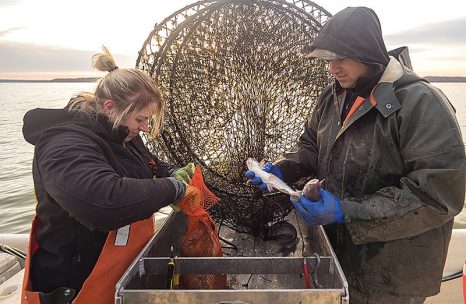
“Eat the Invasives” – New catfish reg threatens watermen’s livelihood, Chesapeake Bay
Richard Turner Jr. maneuvered his Carolina Skiff around Gunston Cove in the Potomac River, then hoisted a hoop net out of the water that he’d left there hours ago. Inside wriggled a 12-pound blue catfish. These mustachioed menaces have been eating their way through the Potomac River and the rest of the Chesapeake Bay for the last decade. They can grow to 5 feet long and weigh up to 100 pounds while gobbling up other commercially valuable fish, such as menhaden and blue crabs. Turner and a growing number of fishermen are turning the tables on these invasive predators. Spurred on by a burgeoning market and the lack of any harvest limits, the blue catfish commercial fishery has taken off. But a new federal regulation could disrupt what many see as one of the most successful “eat the invasives” campaigns in the country. Under legislation passed by Congress years ago to protect Mississippi’s farmed catfish industry from foreign imports, sales of any type of catfish, including these wild-caught in the Chesapeake region, will be subject to inspection by the U.S. Department of Agriculture. The requirement takes full effect in September. continue reading the story here 11:51
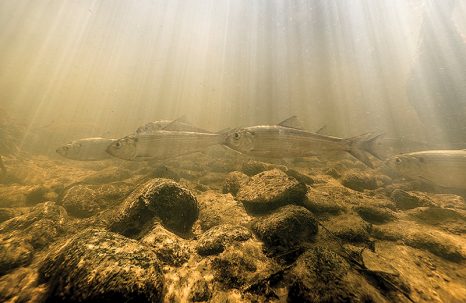
Sonar revealing more river herring in Choptank River than expected
Scientists have a powerful new tool to help them “see” fish in the Chesapeake Bay’s murky tributaries, and it’s yielding some surprisingly good news about two of the estuary’s most troubled species. “Imaging sonar” uses sound to help them view, and count, passing fish in dark or cloudy water. For the past few years, scientists with the Smithsonian Environmental Research Center have been deploying one of these underwater sound cameras in some of the Bay’s rivers to monitor spawning runs of alewife and blueback herring, collectively known as river herring.,,No one knows for sure how many river herring are in the Bay, as fisheries managers lack the staff and resources to do a comprehensive assessment. But a SERC-led team of scientists deployed an imaging sonar device in the Choptank River in 2014 that captured images of the fish as they swam by. Based on the rate at which scientists saw the shadowy blips cross their computer screens, they estimated that as many as 1.3 million river herring swam upriver that spring to spawn. That’s more than expected, and way more than state biologists had figured were there in the early 1970s, the last time anyone looked intensively at the Choptank’s herring runs. Read the article here 10:14
No sanctuary for fishermen
 Sanctuaries are designated areas intended to provide a safe haven and protection. But for the watermen of the Chesapeake Bay and its surrounding tributaries, the word “sanctuary” is more often associated with anguish. So when the National Oceanic and Atmospheric Administration’s (NOAA) Office of National Marine Sanctuaries initiated the designation process for Mallows Bay – Potomac River on October 7 of 2015, the watermen of the Potomac River began to grow wary of their future. On February 1, an assorted group of commercial fishermen from all across the Northern Neck of Virginia met with Maryland commercial fishermen at Mundy Point at Pride of Virginia Seafood and Trucking, Inc. to form together as the newly named Potomac River Working Watermen Association (PRWWA). One month later, on March 2, they held their second meeting to discuss their plan of action in opposition of the Mallows Bay – Potomac River sanctuary proposal. continue reading the story here 14:35
Sanctuaries are designated areas intended to provide a safe haven and protection. But for the watermen of the Chesapeake Bay and its surrounding tributaries, the word “sanctuary” is more often associated with anguish. So when the National Oceanic and Atmospheric Administration’s (NOAA) Office of National Marine Sanctuaries initiated the designation process for Mallows Bay – Potomac River on October 7 of 2015, the watermen of the Potomac River began to grow wary of their future. On February 1, an assorted group of commercial fishermen from all across the Northern Neck of Virginia met with Maryland commercial fishermen at Mundy Point at Pride of Virginia Seafood and Trucking, Inc. to form together as the newly named Potomac River Working Watermen Association (PRWWA). One month later, on March 2, they held their second meeting to discuss their plan of action in opposition of the Mallows Bay – Potomac River sanctuary proposal. continue reading the story here 14:35
Chesapeake Bay advocates alarmed by plan that could open oyster sanctuaries to watermen
 Some of the Chesapeake Bay’s most densely populated oyster sanctuaries could be opened to periodic harvesting under a plan being floated by state officials, setting up more conflict between alarmed environmentalists and watermen seeking to make a living. Neither side is pleased with the first draft of a new map of sanctuary boundaries in Maryland’s share of the bay. While watermen would gain some territory they ceded when a state oyster restoration strategy launched in 2010, dredging would be banned in other areas that are now open to harvesting. The net effect would be a loss of 11 percent of oyster sanctuary, instead opening up that acreage to watermen for undetermined stretches of time once every few years. Gov. Larry Hogan’s administration has supported what it calls “rotational harvesting” as a way to balance oyster recovery and bay restoration with the demands of the seafood industry. Continue reading the article here 15:17
Some of the Chesapeake Bay’s most densely populated oyster sanctuaries could be opened to periodic harvesting under a plan being floated by state officials, setting up more conflict between alarmed environmentalists and watermen seeking to make a living. Neither side is pleased with the first draft of a new map of sanctuary boundaries in Maryland’s share of the bay. While watermen would gain some territory they ceded when a state oyster restoration strategy launched in 2010, dredging would be banned in other areas that are now open to harvesting. The net effect would be a loss of 11 percent of oyster sanctuary, instead opening up that acreage to watermen for undetermined stretches of time once every few years. Gov. Larry Hogan’s administration has supported what it calls “rotational harvesting” as a way to balance oyster recovery and bay restoration with the demands of the seafood industry. Continue reading the article here 15:17
In Chesapeake Bay’s changing ecosystem, blue crab is king (and moving north)
 In the face of an evolving ecosystem, experts agree many of the differences in Chesapeake Bay marine life can – at least in part – be attributed to a worldwide warming trend. Over the last three decades, water temperatures in the Chesapeake Bay have increased about 1.5 degrees Celsius, or about 2.7 degrees Fahrenheit, said Rom Lipcius, professor of marine science at the Virginia Institute of Marine Science. The change means populations of many native sea creatures in the Chesapeake have moved or expanded north in search of cooler water temperatures, and other non-native creatures have moved in. As the warming trend continues, experts say some marine species will thrive as others struggle to survive in the face of temperature, environment and predator and prey changes. “It’s not all bad news, and it’s not all good news,” said Jon Hare, science and research director for the National Oceanic and Atmospheric Administration’s Northeast Fisheries Science Center. “There are both winners and losers in this situation.” There have been a number of species, including blue crab, scup and black sea bass, that have shifted or extended northward along the Atlantic coast, said Hare. Read the story here 08:35
In the face of an evolving ecosystem, experts agree many of the differences in Chesapeake Bay marine life can – at least in part – be attributed to a worldwide warming trend. Over the last three decades, water temperatures in the Chesapeake Bay have increased about 1.5 degrees Celsius, or about 2.7 degrees Fahrenheit, said Rom Lipcius, professor of marine science at the Virginia Institute of Marine Science. The change means populations of many native sea creatures in the Chesapeake have moved or expanded north in search of cooler water temperatures, and other non-native creatures have moved in. As the warming trend continues, experts say some marine species will thrive as others struggle to survive in the face of temperature, environment and predator and prey changes. “It’s not all bad news, and it’s not all good news,” said Jon Hare, science and research director for the National Oceanic and Atmospheric Administration’s Northeast Fisheries Science Center. “There are both winners and losers in this situation.” There have been a number of species, including blue crab, scup and black sea bass, that have shifted or extended northward along the Atlantic coast, said Hare. Read the story here 08:35
Lessons from accidental oyster sanctuaries
 The oysters came up in the dredge like I hadn’t seen them in 50 years (and rarely even back then): huge and clumped together and bedecked with sponges and all manner of marine organisms, including younger oysters, thriving in the niches of the natural reef we’d just busted into. It was last winter, and we’d been dragging the bottom of Virginia’s lower York River for a state crab survey. By chance we’d nicked into an oyster sanctuary, undisturbed for decades. It wasn’t the kind of official sanctuary over which Maryland’s oystermen are wrangling with scientists and environmentalists — the watermen wanting more harvest, others wanting the benefits to the Chesapeake Bay’s water quality and the habitat of an undisturbed oyster reef. The little reef we struck in Virginia, not even designated on charts or given special status in law, is nonetheless well protected. Its enduring and pristine status comes from one of the world’s largest military-industrial complexes, concentrated here in the lower Chesapeake. Read the story here 14:16
The oysters came up in the dredge like I hadn’t seen them in 50 years (and rarely even back then): huge and clumped together and bedecked with sponges and all manner of marine organisms, including younger oysters, thriving in the niches of the natural reef we’d just busted into. It was last winter, and we’d been dragging the bottom of Virginia’s lower York River for a state crab survey. By chance we’d nicked into an oyster sanctuary, undisturbed for decades. It wasn’t the kind of official sanctuary over which Maryland’s oystermen are wrangling with scientists and environmentalists — the watermen wanting more harvest, others wanting the benefits to the Chesapeake Bay’s water quality and the habitat of an undisturbed oyster reef. The little reef we struck in Virginia, not even designated on charts or given special status in law, is nonetheless well protected. Its enduring and pristine status comes from one of the world’s largest military-industrial complexes, concentrated here in the lower Chesapeake. Read the story here 14:16
‘Oyster wars:’ Watermen aim to take back oyster bars as state panel reviews shellfish sanctuaries
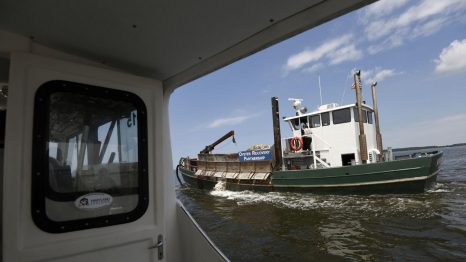 Shells carrying millions of lab-grown baby oysters tumbled down the sides of a green-hulled boat named Robert Lee, and the $35,000 investment sunk into the Choptank River where it widens to meet the Chesapeake. The oysters, planted this past week, will grow there for two or three years before watermen scoop them back up and restaurants serve them fried or on ice. Nearby, other oyster reefs are restocked in the same manner but are off-limits to harvesting. These sanctuaries across bay tributaries help the shellfish recover from decades of disease outbreaks, and overfishing before that, and have been expanded in recent years to cover nearly a quarter of the bay’s 36,000 acres of oyster bars. Watermen could soon reclaim some of that territory. Read the rest here 12:01
Shells carrying millions of lab-grown baby oysters tumbled down the sides of a green-hulled boat named Robert Lee, and the $35,000 investment sunk into the Choptank River where it widens to meet the Chesapeake. The oysters, planted this past week, will grow there for two or three years before watermen scoop them back up and restaurants serve them fried or on ice. Nearby, other oyster reefs are restocked in the same manner but are off-limits to harvesting. These sanctuaries across bay tributaries help the shellfish recover from decades of disease outbreaks, and overfishing before that, and have been expanded in recent years to cover nearly a quarter of the bay’s 36,000 acres of oyster bars. Watermen could soon reclaim some of that territory. Read the rest here 12:01
A Good News Report: Blue crab numbers rebounding
 Blue crab population numbers have grown for the second straight year, especially for female crabs, but their numbers are still below target levels, a Chesapeake Bay Program report released Thursday said. The report also found that crabs were not being overfished, with about 50 million pounds taken last year over 2014’s 35.2 million pounds — the lowest harvest in 25 years. It urged regulators to stay the course and maintain crab management regulations in order to maintain the progress. Female crabs rebounded from a depleted 68 million in 2014 to 194 million at the beginning of the 2016 crabbing season, and juvenile crabs, those that will grow to harvestable size by the fall and grow into large crabs by next season, were also holding steady. Read the rest here 07:59
Blue crab population numbers have grown for the second straight year, especially for female crabs, but their numbers are still below target levels, a Chesapeake Bay Program report released Thursday said. The report also found that crabs were not being overfished, with about 50 million pounds taken last year over 2014’s 35.2 million pounds — the lowest harvest in 25 years. It urged regulators to stay the course and maintain crab management regulations in order to maintain the progress. Female crabs rebounded from a depleted 68 million in 2014 to 194 million at the beginning of the 2016 crabbing season, and juvenile crabs, those that will grow to harvestable size by the fall and grow into large crabs by next season, were also holding steady. Read the rest here 07:59






